Why does your charming Oriental Shorthair sometimes drool like a teething toddler? The answer may surprise you! Oriental Shorthair Cat drooling can range from endearing quirks to troubling health issues, leaving cat owners puzzled and often concerned. Much like their playful and inquisitive nature, this unique behavior can stem from a variety of sources.
As a devoted feline parent, understanding the potential causes behind your furry friend’s excessive drooling can help you differentiate between harmless antics and signs of underlying health problems. Join us as we delve into the intriguing aspects of Oriental Shorthair health issues and uncover the mysteries behind their curious salivation habits.
Key Takeaways
- Oriental Shorthair Cat drooling can be a natural behavior or a sign of health concerns.
- Their playful nature might lead to the ingestion of objects causing drooling.
- Recognizing abnormal drooling patterns is key to addressing potential health issues.
- Consulting a veterinarian can help ensure your cat’s well-being.
- Prompt veterinary care can mitigate complications arising from excessive drooling in cats.
- Understanding your cat’s behavior can help you provide better care and comfort.
Understanding Oriental Shorthair Cat Drooling Behavior

Understanding why your Oriental Shorthair cat might drool occasionally can help you differentiate between normal, benign behavior and symptoms of potential health issues. Here we delve into the natural causes and warning signals to watch out for.
Natural Causes of Drooling
One of the common natural cat drooling causes is moments of extreme relaxation and contentment. Have you ever noticed a bit of drool when your furry friend is purring away during a petting session? That’s a sign of pure happiness. Another benign cause could be the anticipation of a delightful treat or meal. Just like Pavlov’s dogs, cats can drool when they expect food. So, the next time you find your Oriental Shorthair drooling while you’re reaching for the treat jar, it’s probably nothing to worry about.
When Drooling Indicates a Problem
However, it’s crucial to recognize when drooling goes from cute to concerning. Persistent drooling combined with symptoms like a loss of appetite, lethargy, or difficulties eating could indicate Oriental Shorthair Cat health issues. If you ever ask yourself, “Why does my Oriental Shorthair Cat drool this way?” accompanied by these signs, it’s time to consult your vet immediately. Possible health issues include oral diseases, ingestion of toxic substances, or even certain neurological conditions.
By understanding the full scope of what causes drooling in Oriental Shorthair cats, you can become more attuned to your pet’s health and well-being, ensuring a happy and healthy life together.
Common Causes of Excessive Drooling in Oriental Shorthair Cats
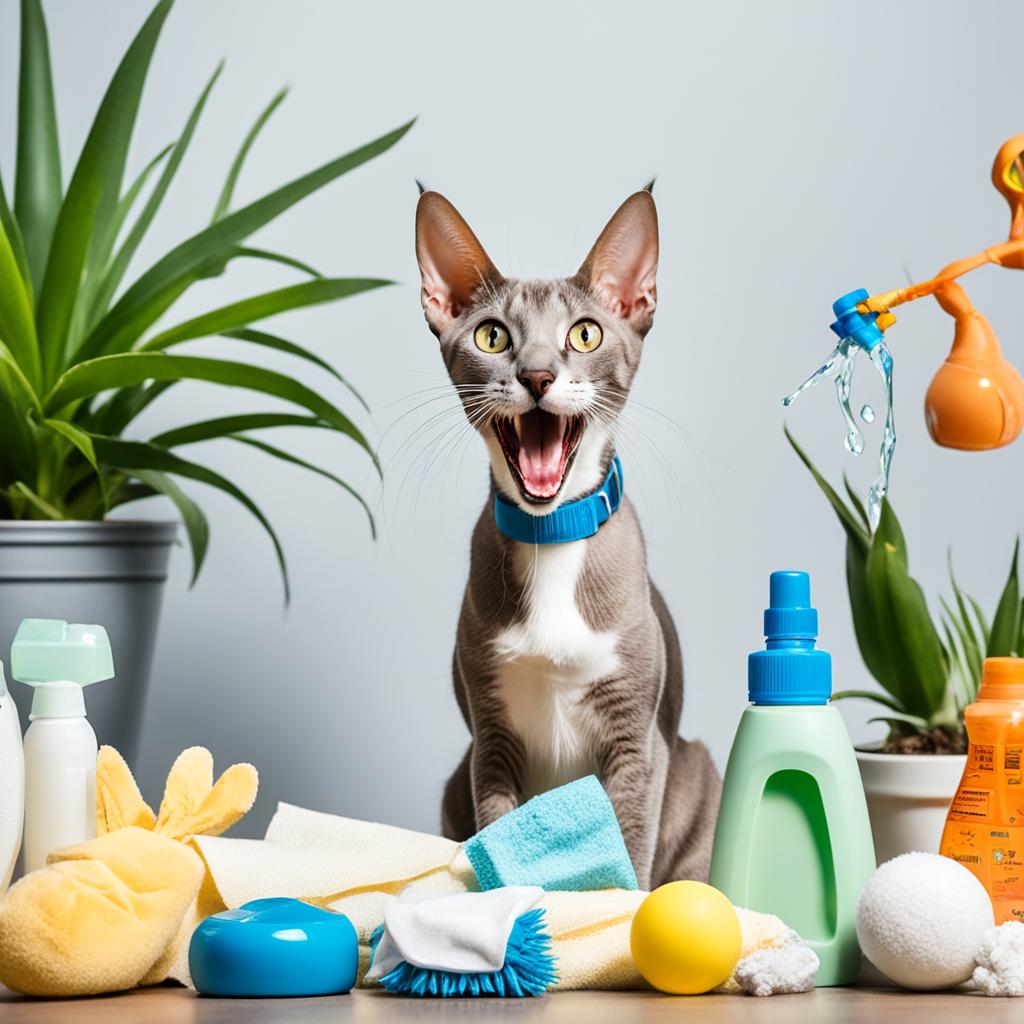
Understanding the underlying reasons for excessive drooling in your Oriental Shorthair cat can help address potential health issues early. From dental woes to curious misadventures, several factors could contribute to this phenomenon.
Dental Issues and Oral Health
Dental issues in cats, such as periodontal disease or tooth decay, are common culprits behind excessive drooling in Oriental Shorthairs. Ensuring regular dental check-ups and maintaining good oral hygiene can prevent these problems. Signs to watch out for include bad breath, swollen gums, and refusal to eat hard food.
Foreign Object Ingestion
Oriental Shorthair cats are known for their inquisitive nature, which can sometimes lead to foreign object ingestion. If your cat swallows non-edible items like rubber bands or plastic pieces, it could result in excessive drooling. It’s vital to cat-proof your home and keep small objects out of their reach to avoid these incidents.
Gastrointestinal Obstructions
Gastrointestinal obstructions in cats can occur when ingested objects become lodged within the digestive tract, leading to distress and excessive drooling. Symptoms may include vomiting, lethargy, and abdominal pain. Timely veterinary intervention is essential to mitigate further complications and ensure your cat’s swift recovery.
| Common Cause | Symptoms | Preventive Measures |
|---|---|---|
| Dental Issues | Bad breath, swollen gums, refusal to eat hard food | Regular dental check-ups, proper oral hygiene |
| Foreign Object Ingestion | Excessive drooling, pawing at the mouth | Cat-proof home, keep small objects away |
| Gastrointestinal Obstructions | Vomiting, lethargy, abdominal pain | Immediate veterinary care, avoid foreign object ingestion |
Why Does My Oriental Shorthair Cat Drool?
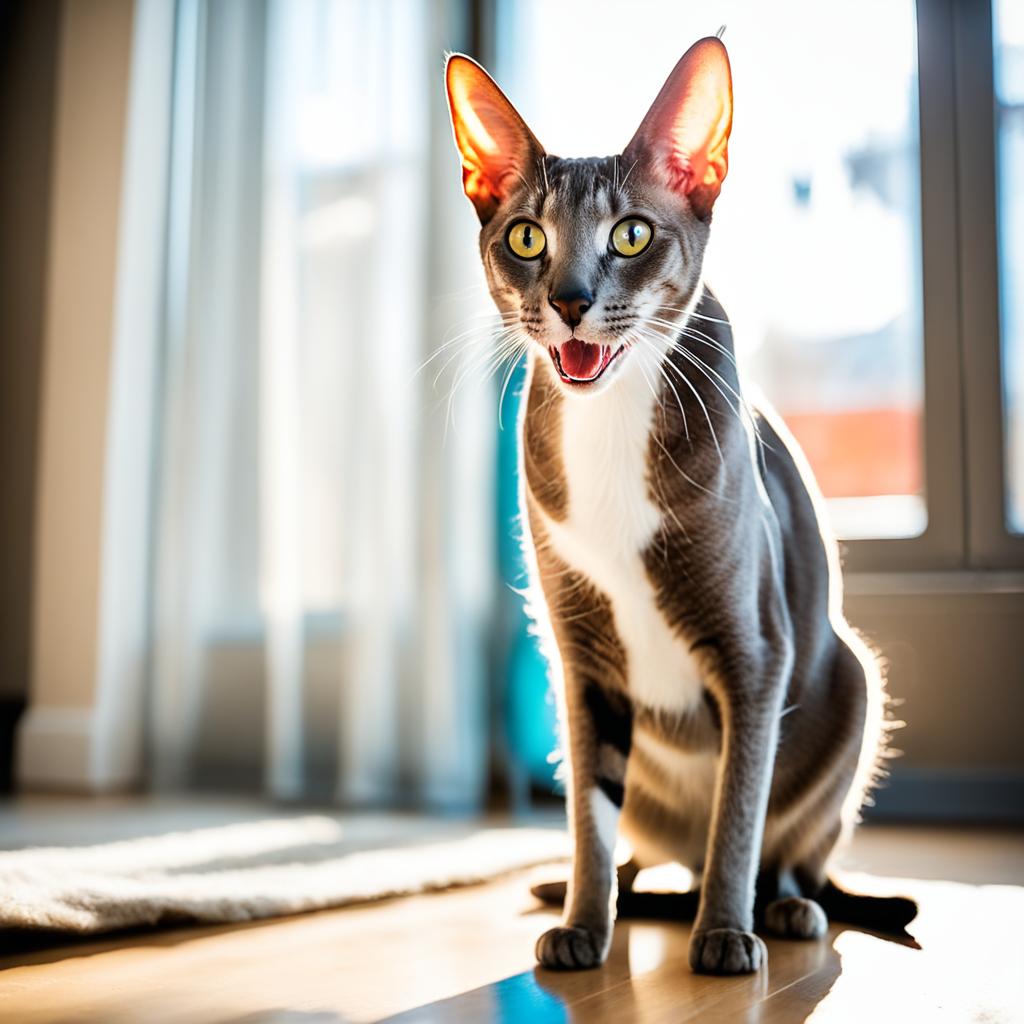
Understanding why your Oriental Shorthair Cat drools often delves into several fascinating facets of feline life. Is it merely a quirky habit or a marker of deeper cat health concerns? This riddle unfolds through a combination of behavioral traits and physiological triggers.
Firstly, natural behaviors often prompt drooling. For instance, your cat might drool when extremely relaxed during petting sessions or while observing tantalizing food. These harmless triggers should be distinguished from more concerning Oriental Shorthair Cat drooling causes.
However, when drooling is persistent and coupled with other symptoms like appetite loss or lethargy, the cause might be rooted in more serious cat health concerns. Contributing factors could involve gum disease, trauma, or foreign objects lodged within the oral cavity.
To aid you in preventing drooling in Oriental Shorthair Cat, it is vital to regularly monitor and inspect your pet’s oral health. Routine dental care and prompt veterinary consultations prevent minor issues from escalating into significant problems.
“By identifying and addressing the underlying causes, you can contribute significantly to your feline friend’s overall health and well-being.”
To summarize the potential causes behind your Oriental Shorthair Cat’s drooling, here’s a comprehensive breakdown:
| Potential Causes | Indicators |
|---|---|
| Natural Relaxation | Purring and kneading during petting sessions |
| Dental Issues | Red, swollen gums, bad breath |
| Foreign Objects | Pawing at mouth, difficulty eating |
| Gastrointestinal Issues | Vomiting, decreased appetite |
By staying vigilant and proactive in preventing drooling in Oriental Shorthair Cat, you can ensure your pet lives a healthy, drool-free life. Remember, recognizing and understanding these causes is pivotal in addressing the issue effectively.
Health Issues Leading to Drooling in Oriental Shorthair Cats
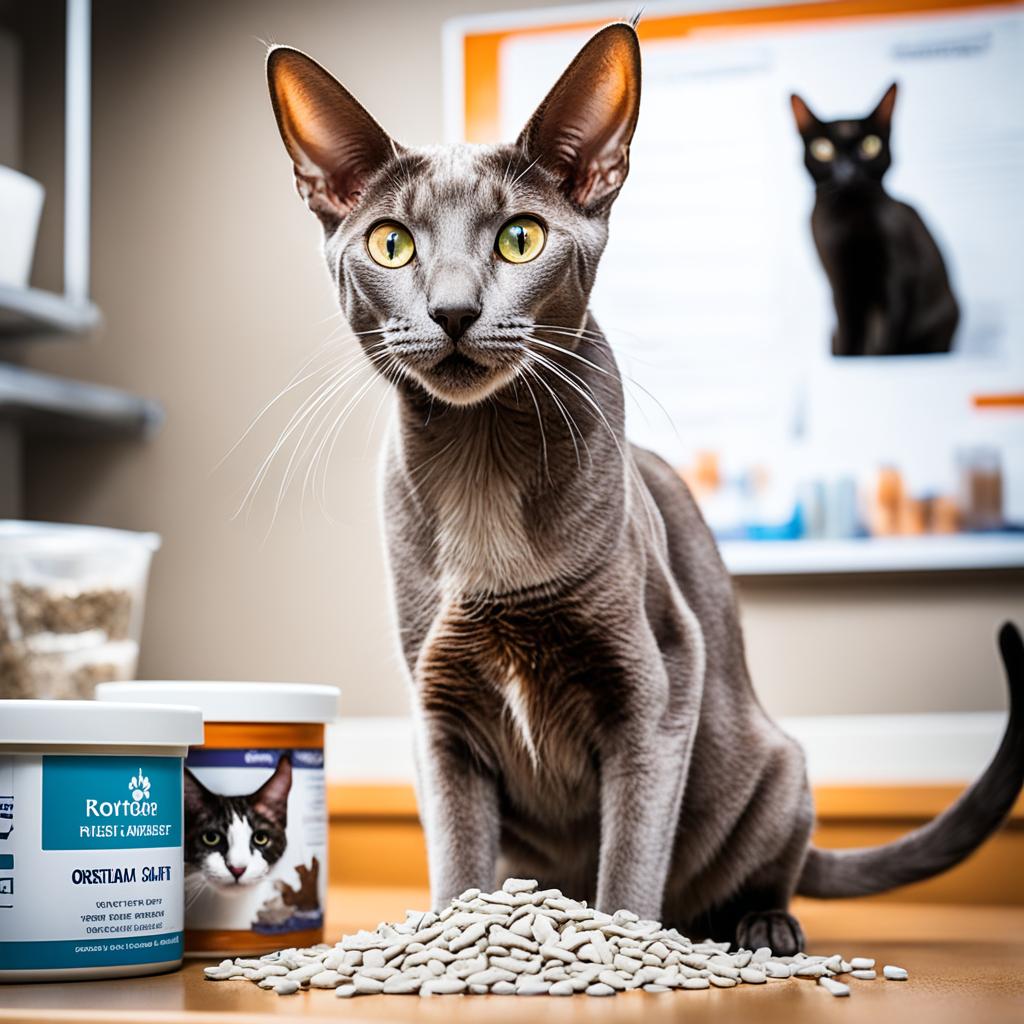
Salivation in Oriental Shorthairs goes beyond the occasional drool after feasting on their favorite snacks. Owners should be aware that continuous drooling can often signal deeper Oriental Shorthair Cat health issues, necessitating immediate attention.
Diseases and Infections
When it comes to Feline infectious diseases, Oriental Shorthairs have their fair share of vulnerabilities. Feline calicivirus (FCV) is a prime example, known for causing oral ulcers that lead to drooling. Additionally, kidney disease is another serious condition linked to Oriental Shorthair Cat illnesses, prompting symptoms like nausea and excessive salivation.
Neurological Conditions
Beyond infections, Cat neurological disorders can also be culprits behind your cat’s drooling. Conditions like epilepsy or even head trauma can affect the cat’s nervous system, manifesting as uncontrolled drooling. These subtle yet impactful Oriental Shorthair Cat health issues require prompt veterinary diagnosis to manage and treat effectively.
How to Stop Oriental Shorthair Cat from Drooling
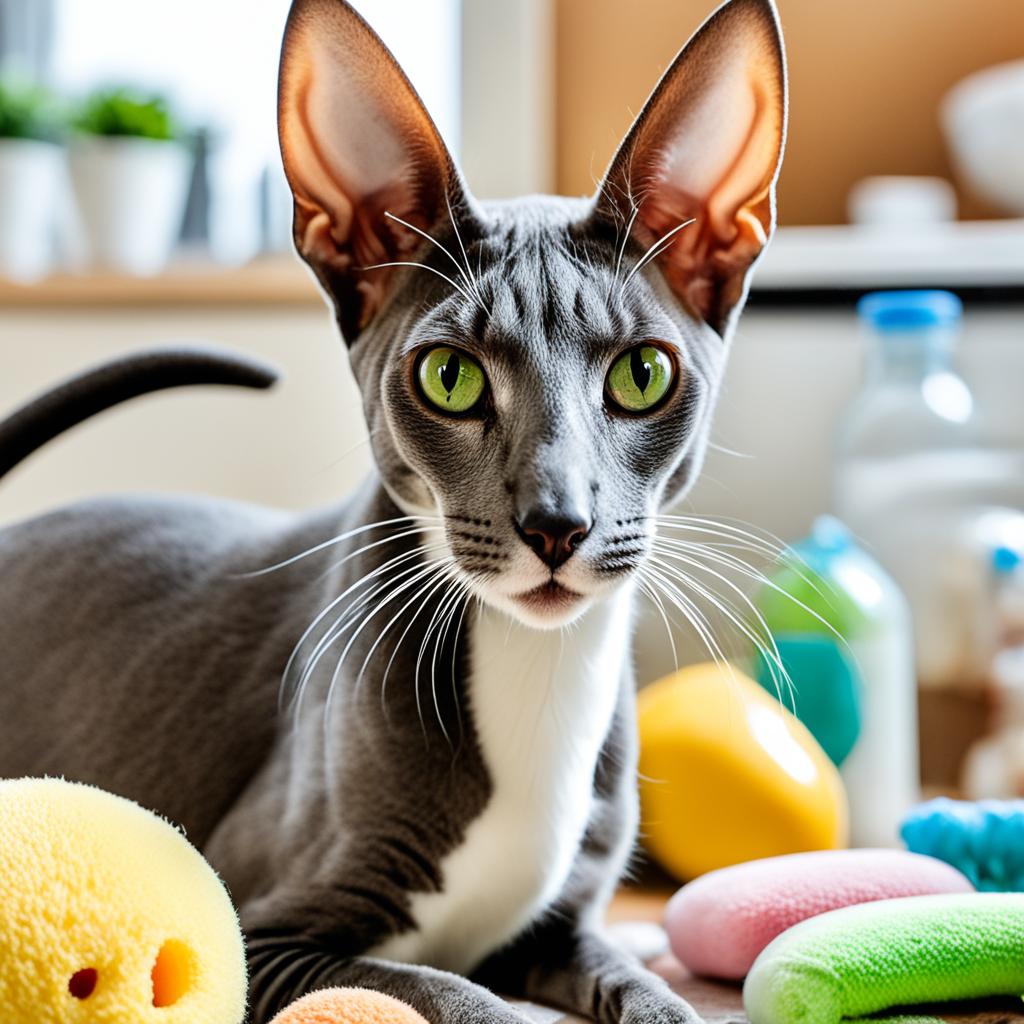
Dealing with an Oriental Shorthair Cat that’s suddenly been drooling more than usual? Fear not, because there are immediate and long-term solutions to help manage and prevent this issue. Understanding and addressing the root causes through effective measures is crucial for your feline friend’s health.
Immediate Actions to Take
For instant remedies for cat drooling, start by gently inspecting your Oriental Shorthair’s mouth. Look for any foreign objects or signs of dental issues. If you discover anything concerning, contact your veterinarian right away. Hydration is also key, so ensure your feline has access to plenty of fresh water. Additionally, calm your cat with a quiet environment to reduce stress-induced drooling.
Long-Term Preventative Measures
Preventive care for Oriental Shorthair Cats involves several strategies. Regular dental check-ups are essential to keep their teeth and gums in good health, preventing issues that could cause excess salivation. Cat-proof your home to avoid the ingestion of small, drool-inducing objects. You might also consider offering safe chew toys to engage their curious nature safely.
- Maintain routine dental exams to catch potential problems early.
- Ensure a constant supply of clean, fresh water.
- Remove small, hazardous objects from reachable areas in your home.
- Introduce safe toys that can stimulate your cat without risks.
- Monitor their overall health regularly for early detection of issues.
Preventing drooling in Oriental Shorthair cats is about staying proactive with their health and environment. With the right approach, you can keep your beloved pet comfortable and their drooling under control.
Effective Remedies for Oriental Shorthair Cat Drooling
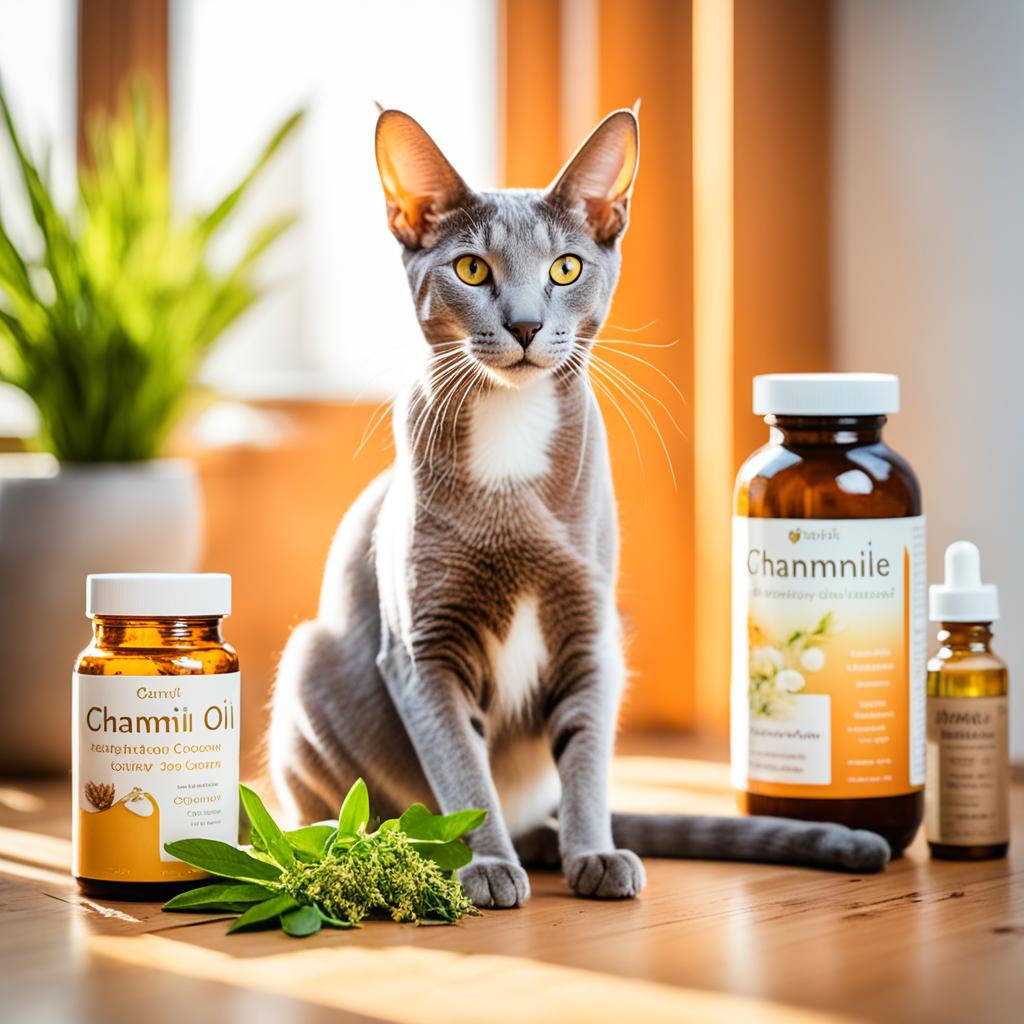
Managing feline saliva production, especially in Oriental Shorthairs, can sometimes feel like a Sherlock Holmes mystery. Fortunately, you can use simple Oriental Shorthair Cat drooling remedies to mitigate this quirky behavior.
If you notice an increase in drooling, starting with basic home treatment for cat drooling can be effective. For instance, consistently brushing your cat’s teeth can help maintain oral hygiene. Remember, a clean mouth equals less drool!
Sometimes, a cat’s diet can trigger excess saliva. Opt for a high-quality cat food that doesn’t contain questionable fillers. This can significantly help in managing feline saliva production and keep those adorable whiskers dry.
If home remedies don’t seem to tackle the issue, consulting your vet might be essential. They could prescribe practical Oriental Shorthair Cat drooling remedies tailored to your furry friend’s needs, whether it’s medication or a specialized diet.
| Remedy Type | Description | Effectiveness |
|---|---|---|
| Home Dental Care | Regular brushing of teeth | High |
| Dietary Adjustments | Providing high-quality, filler-free food | Moderate |
| Vet Consultation | Professional medical advice and treatments | Very High |
Implementing simple steps for managing feline saliva production is not just beneficial for your Oriental Shorthair’s health but also adds more cuddle sessions without the slobber! By using these Oriental Shorthair Cat drooling remedies, your feline friend will be both comfortable and drool-free.
Understanding Cat Drooling Behavior in General
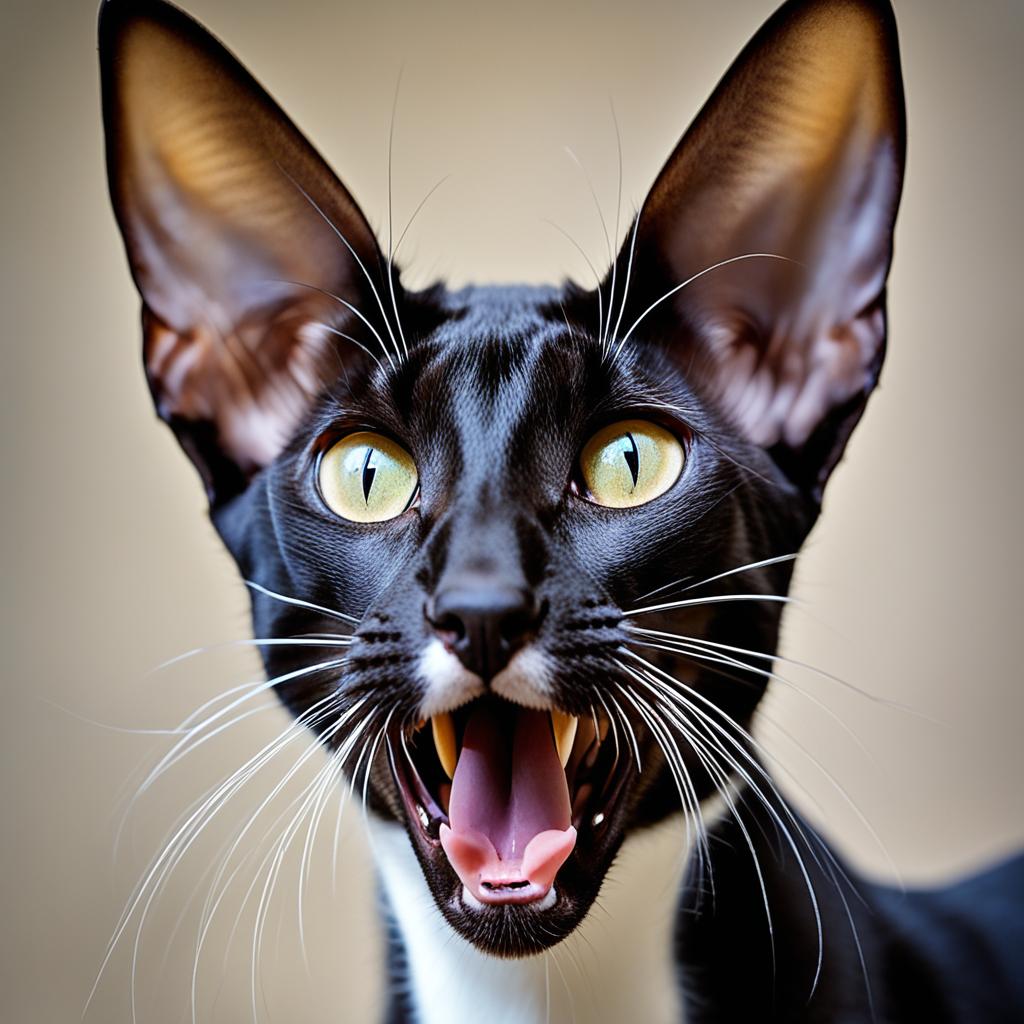
When it comes to feline quirks, drooling is a behavior that often leaves cat owners scratching their heads. While your Oriental Shorthair’s slobber might be puzzling, it’s helpful to compare this behavior with other breeds to see if there’s a purr-ticular trend.
Comparisons with Other Breeds
Understanding cat drooling behavior isn’t exclusive to one breed. For instance, Siamese cats can drool when they’re especially happy with their human. Maine Coons, with their majestic fur and friendly demeanor, will sometimes drool during a robust head scratch. By comparing breed-specific drooling in cats, it becomes evident that this is a shared, albeit confusing, trait among many breeds.
Behavioral Factors
Now, let’s dive into the fascinating realm of behavioral factors. Drooling can be linked to various triggers:
- Contentment: A sign your feline friend is utterly relaxed, possibly kneading on a soft blanket.
- Anticipation: Smelling their favorite treat or anticipating a meal can result in a little extra dribble.
- Anxiety: Behavioral analysis in feline drooling indicates that stress or fear, such as a trip to the vet, might make your cat produce more saliva than usual.
So, whether your cat is from a distinguished breed or a lovable mix, understanding these behavioral factors can help you distinguish between normal drooling and potential health concerns.
Let’s take a closer look at how various breeds stack up when it comes to drooling:
| Breed | Drooling Trigger |
|---|---|
| Siamese | Happiness and affection |
| Maine Coon | Head scratching |
| Oriental Shorthair | Excitement and anxiety |
Preventing Drooling in Your Oriental Shorthair Cat
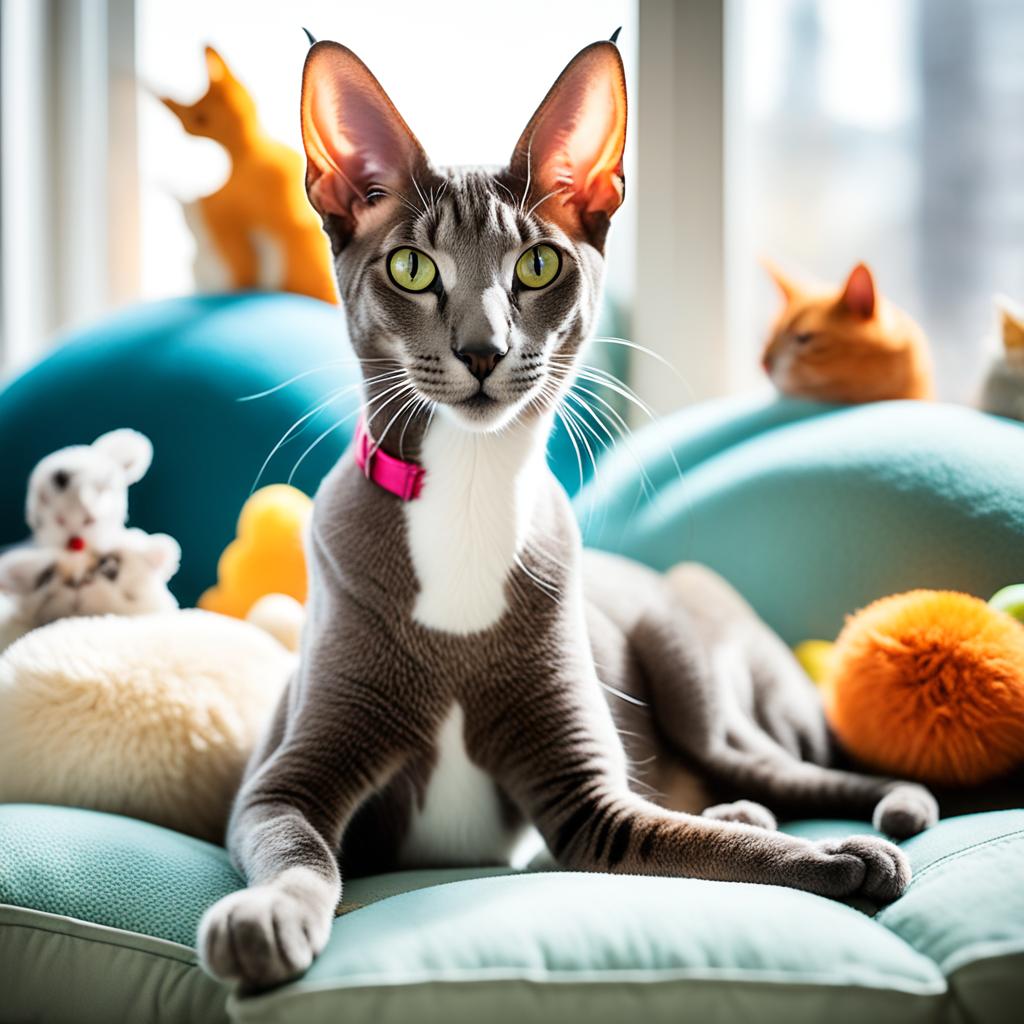
If you’re on a mission to tackle drool, you’re in the right place! To prevent excessive drooling in your Oriental Shorthair Cat, it’s imperative to adopt effective techniques. Maintaining Oriental Shorthair Cat care involves several proactive measures that can significantly mitigate this issue.
First up, regular health check-ups are non-negotiable. Taking your feline friend for routine veterinary visits ensures that potential health issues are detected and managed early, which is crucial for excessive drooling in cats prevention. An unhealthy cat is more likely to exhibit drool-inducing behaviors.
Don’t underestimate the power of engaging play and environmental enrichment. Cats, especially the curious Oriental Shorthairs, thrive in stimulating environments. Providing toys and activities can prevent them from chewing on random objects that might cause drooling due to oral irritation or foreign object ingestion.
The art of Techniques to prevent cat drooling also lies in maintaining top-notch oral hygiene. Regular brushing and using vet-recommended dental products can keep those pearly whites and gums healthy. A cat with excellent dental health is less likely to drool excessively.
Remember, an ounce of prevention is worth a pound of drool.
Here’s a structured look at the recommended Oriental Shorthair Cat care practices:
| Preventive Measure | Description |
|---|---|
| Routine Health Check-ups | Schedual regular vet visits to detect and manage health issues early. |
| Engaging Play | Provide toys and activities to stimulate and entertain your cat. |
| Oral Hygiene | Brush your cat’s teeth regularly and use vet-recommended dental products. |
Employ these techniques to ensure your Oriental Shorthair leads a drool-free and happy life, keeping both you and your carpet delighted. With consistent Oriental Shorthair Cat care and a keen eye for preventive measures, you’re well on your way to mastering the art of drooling prevention.
Conclusion
As we wrap up this insightful journey into the world of Oriental Shorthair Cats and their drooling quirks, it’s clear that understanding the reasons behind their salivation is paramount. From natural relaxation-induced drooling to more severe health issues, it’s important to recognize and address these behaviors swiftly. Indeed, your awareness and prompt action play a critical role in safeguarding your cat’s well-being.
We’ve delved into common causes, ranging from dental issues and foreign objects to infectious diseases, emphasizing the importance of vigilant care and regular check-ups. By understanding these drooling issues, you’re better equipped to spot early signs of potential health problems and seek veterinary advice, ultimately ensuring your cat’s comfort and longevity.
Remember, preventive measures are equally vital. Consistent dental hygiene, creating a safe environment free from small ingestible objects, and routine health evaluations can significantly reduce the instances of drooling mishaps. Maintaining your Oriental Shorthair’s oral health is an ongoing commitment, and your dedication to understanding feline drooling issues will undoubtedly contribute to a happier, healthier companion.
FAQ
Why Does My Oriental Shorthair Cat Drool?
Oriental Shorthair Cats may drool due to various reasons, including natural responses during relaxation and petting, dental issues, or ingesting foreign objects. Persistent drooling should be evaluated by a veterinarian to rule out health concerns.
What are common natural causes of drooling in Oriental Shorthair Cats?
Natural causes of drooling typically include contentment and relaxation, such as during petting or grooming sessions. This behavior is usually harmless unless accompanied by other symptoms.
When does drooling indicate a problem in Oriental Shorthair Cats?
Drooling indicates a problem when it is persistent and paired with other symptoms like loss of appetite, lethargy, or behavioral changes. This could signal dental issues, ingested foreign objects, or other health issues.
What dental issues can cause excessive drooling in Oriental Shorthair Cats?
Dental issues such as periodontal disease, tooth decay, or oral infections can lead to excessive drooling. Regular dental check-ups can help prevent and manage these problems.
How can foreign object ingestion cause drooling in my cat?
Ingesting foreign objects like rubber bands or small toys can cause drooling as the cat’s body reacts to the obstruction. If suspected, this requires immediate veterinary attention.
What should I do if my cat ingests a foreign object?
If you suspect your cat has ingested a foreign object, check their mouth for any visible items, and consult your veterinarian immediately to avoid gastrointestinal obstructions.
What health issues lead to drooling in Oriental Shorthair Cats?
Health issues such as feline calicivirus, kidney disease, or neurological disorders can lead to drooling. Early detection and veterinary treatment are crucial for these conditions.
How can I prevent my Oriental Shorthair Cat from drooling excessively?
Regular dental care, routine veterinary check-ups, and keeping small objects out of reach are effective measures to prevent excessive drooling.
Are there immediate actions to take if my Oriental Shorthair Cat starts drooling excessively?
First, check for any foreign objects in your cat’s mouth. If none are found, monitor for other symptoms and consult your veterinarian to determine the underlying cause.
What long-term preventative measures can I take to stop my cat from drooling?
Long-term measures include maintaining regular dental hygiene, ensuring a safe environment free of small, ingestible objects, and routine health check-ups to catch and address any emerging issues early.
What are some effective remedies for managing drooling in Oriental Shorthair Cats?
Depending on the cause, remedies can include home treatments like maintaining oral hygiene, providing safe toys, and possibly medicinal interventions prescribed by a veterinarian.
Is drooling behavior common in other cat breeds?
While drooling can occur in many cat breeds, the frequency and causes may vary. Comparing behaviors across breeds can provide insights, though each cat’s individuality plays a significant role.
How do behavioral factors influence drooling in cats?
Behavioral factors like anxiety, stress, or excitement can lead to drooling. Understanding your cat’s personality and triggers can help you manage and reduce such incidents.
What strategies can I use to prevent drooling in my Oriental Shorthair Cat?
Strategies include regular health check-ups, stimulating environments, safe toy options, and maintaining good dental hygiene to ensure your cat’s overall well-being and minimize drooling incidents.
Source Links
- https://catcare.com/blog/why-cats-eat-things-that-they-shouldnt/
- https://www.pinterest.co.uk/pin/are-siamese-cats-good-mousers-evaluating-their-mouse-hunting-prowess-against-the-best-cat-breeds-known-for-catching-mice-my-british-shorthair-cat-adoption-in-2024–704461566740649639/
- https://medium.com/@ShelbySchweitzer/black-cats-superstition-8f75616f968f




